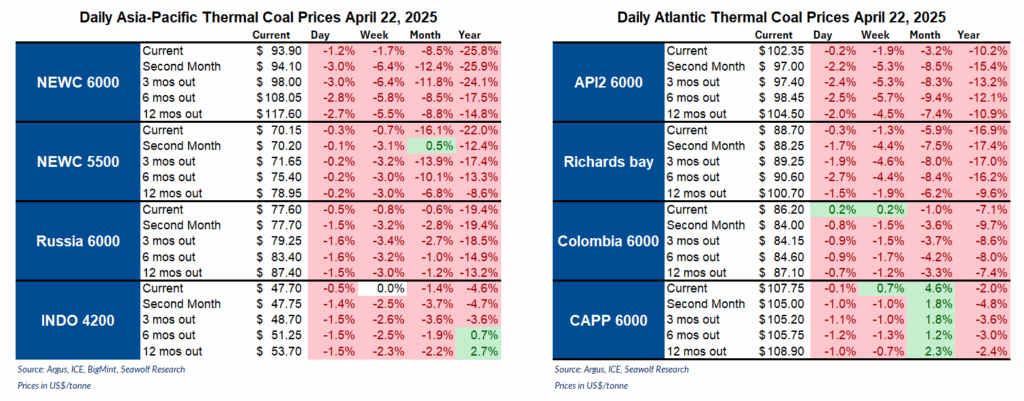Shipments from South Africa’s biggest coal export facility dropped to the lowest in over three decades in 2023 as rail disruptions weighed on deliveries from mines.
Richards Bay Coal Terminal shipped 47.2 million tons of coal last year, the lowest amount since at least 1992, Chief Executive Officer Alan Waller told reporters in an online briefing. State rail company Transnet SOC Ltd. had set a target to deliver 60 million tons to the facility, but ongoing challenges from a shortage of locomotives to derailments and crime resulted in a sixth annual decline in volume.
Coal Bottleneck
Transnet’s operational obstacles have shown few signs of easing. Trains collided on the coal line just outside of Richards Bay on Jan. 14. RBCT has set a “budgeted rate” of 50 million tons on exports this year, which roughly matches the amount of coal that reaches the facility by rail from the mines, according to the company’s presentation.
Higher coal prices following Russia’s invasion of Ukraine meant miners could still make a profit if they transported the fuel by truck to bypass rail constraints, but demand has since declined. Thungela Resources Ltd., South Africa’s biggest coal miner by market value, hasn’t been using trucks recently, while Exxaro Resources Ltd. has been using the option “opportunistically,” the companies said earlier this month.
South Africa’s Coal Export Destinations
One side effect of rising stockpiles is that smaller miners may choose to stop production.
Europe imported 6.1 million tons of South African coal from RBCT in 2023, a 57% decline from the previous year, reflecting lower demand. India was the main destination for the fuel, with 19.7 million tons shipped there from the facility.










